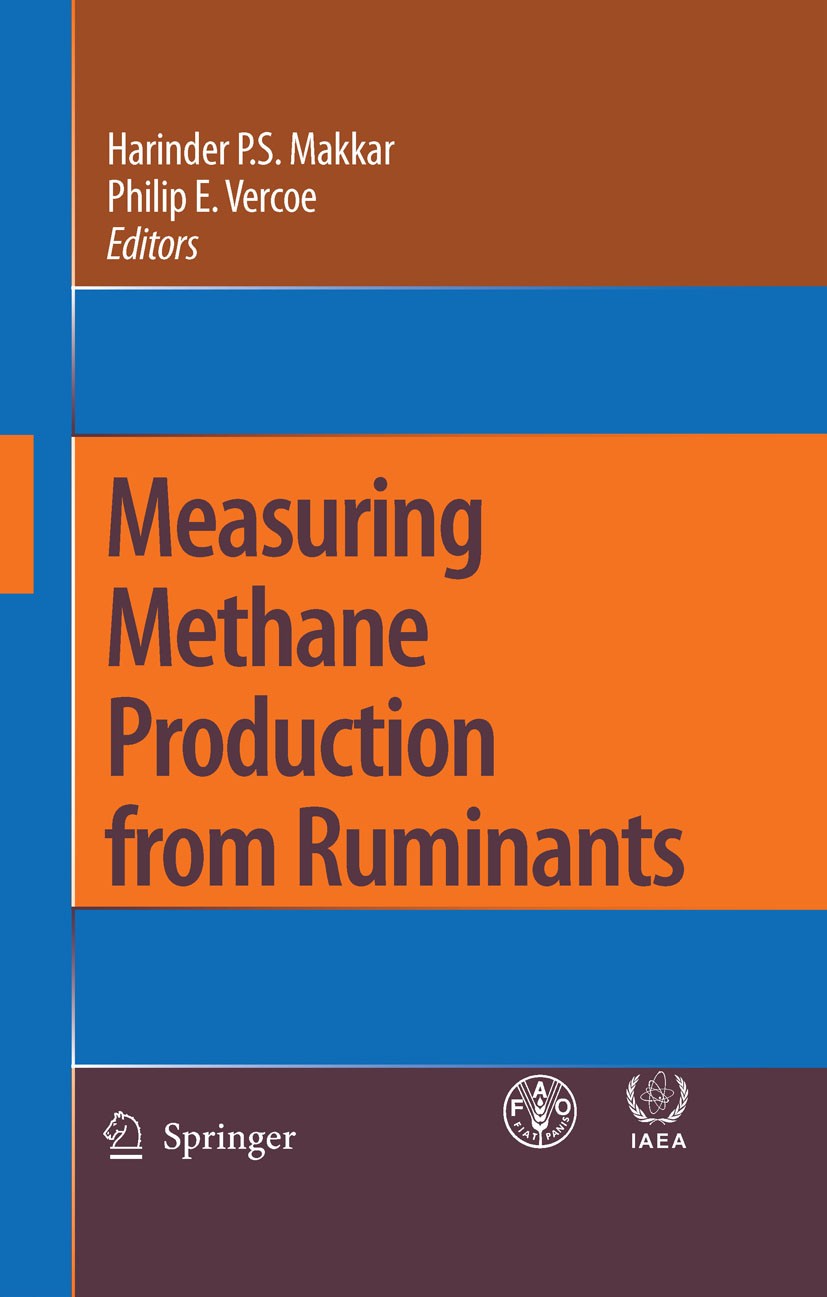| 书目名称 | Measuring Methane Production from Ruminants | | 编辑 | Harinder P.S. Makkar,Philip E. Vercoe | | 视频video | http://file.papertrans.cn/629/628191/628191.mp4 | | 概述 | No other similar manual available.Written by authorities in the field.Gives comprehensive account of the methodologies and protocols for measuring methane.The techniques can be adapted to other system | | 图书封面 |  | | 描述 | The world’s livestock sector is amidst a major transformation, fuelled by high demand for meat and milk, which is likely to double over the next two decades in developing countries. The major driving force behind this demand for livestock products is a combination of population growth, urbanization and income growth, especially in developing countries. The challenge is to enhance animal productivity without adversely affecting the environment. A key to this is reducing methane emissions from ruminants. The major limitation to ruminant production in many tropical regions of Africa, Asia and Latin America, where a large proportion of the global ruminant population is located, is poor nutrition. The productivity of animals is restricted by the low nitrogen and high fibre content of the native grasses and crop residues, which form the basis of the diets in these regions. Animals on these types of diets emit more methane than animals fed better quality temperate forages. These methane emissions represent a loss of digestible energy to the animal (up to 15%) as well as a threat to the environment. Reducing methane production by ruminants could improve their productivity, provided the eff | | 出版日期 | Book 2007 | | 关键词 | Grazing; emission; emissions; environment; production; respiration; air pollution and air quality | | 版次 | 1 | | doi | https://doi.org/10.1007/978-1-4020-6133-2 | | isbn_softcover | 978-90-481-7547-5 | | isbn_ebook | 978-1-4020-6133-2 | | copyright | Springer Science+Business Media B.V. 2007 |
The information of publication is updating

|
|
 |Archiver|手机版|小黑屋|
派博传思国际
( 京公网安备110108008328)
GMT+8, 2025-11-16 02:50
|Archiver|手机版|小黑屋|
派博传思国际
( 京公网安备110108008328)
GMT+8, 2025-11-16 02:50


